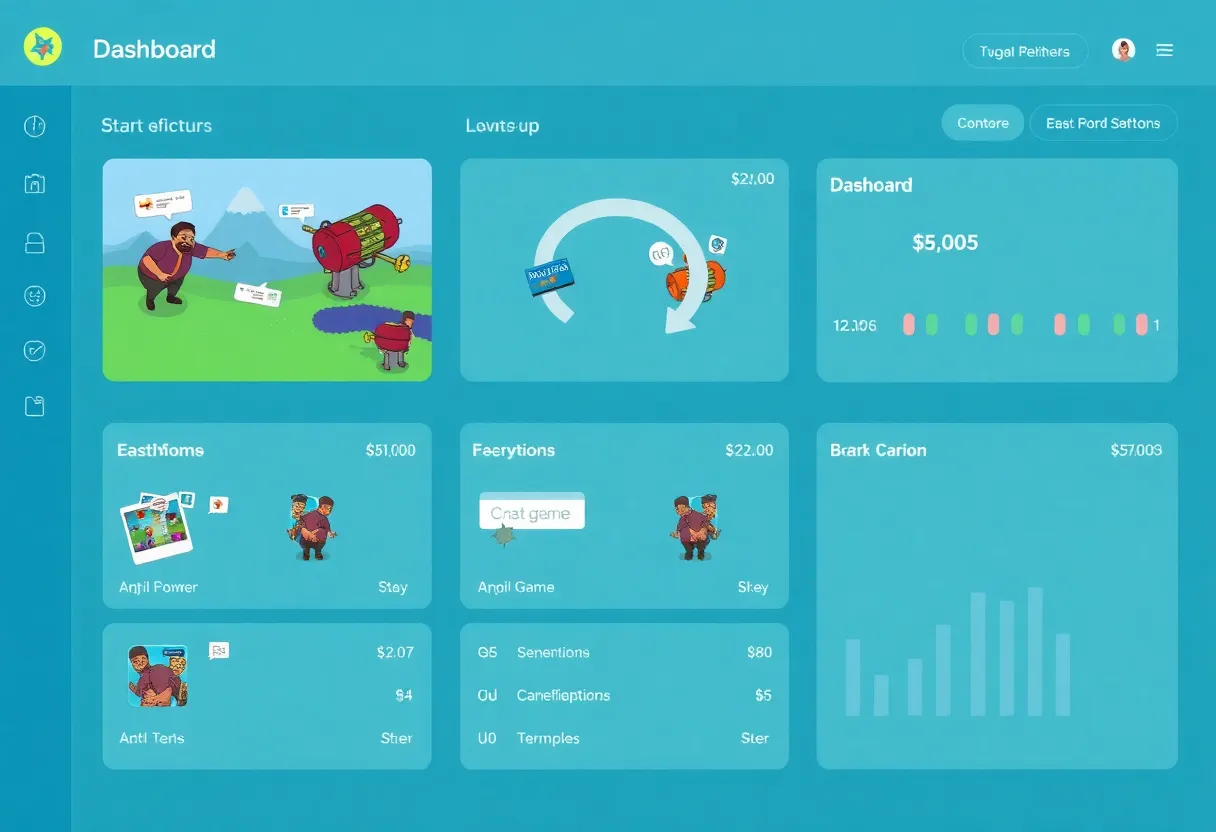

Interactive game elements in a digital marketing dashboard.
Article Sponsored by:
Real Internet Sales is a digital marketing agency located in Columbia, South Carolina. We specialize in website design and development, SEO, social media management, online advertising, AI integration, and workflow automation. Our services also include affiliate marketing and digital strategy.
Real Internet Sales also offer specialized programming for real estate firms, using IDX and RETS feeds to automatically populate MLS properties on their websites for improved property listings and sales. We also work with clients in the restaurant, tourism, and e-commerce industries to enhance their digital presence and streamline operations.
Want to target the right audience? Sponsor our site and choose your specific industry to connect with a relevant audience.
Prominent brand mentions across targeted, industry-focused articles
High-visibility placements that speak directly to an engaged local audience
Guaranteed coverage that maximizes exposure and reinforces your brand presence
Interested in seeing what sponsored content looks like on our platform?
May’s Roofing & Contracting
Forwal Construction
NSC Clips
Real Internet Sales
Suited
Florida4Golf
Click the button below to sponsor our articles:
Sponsor Our ArticlesEngaging customers in an era dominated by digital interaction is crucial for businesses looking to thrive. One innovative strategy gaining traction is gamification—a concept that integrates game mechanics into non-game contexts. This approach not only enhances user experience but also drives customer engagement effectively. In this article, we will explore how to utilize gamification in digital marketing to boost customer interaction, foster loyalty, and enhance overall marketing outcomes.
Gamification involves incorporating game-like elements such as points, levels, and challenges into various interactions and platforms. This allows brands to create a more engaging and enjoyable experience for users. By tapping into basic human psychology, it encourages customers to participate, communicate, and connect with brands more regularly.
Gamification leverages several psychological principles. These include:
Gamification encourages active participation. When customers engage in activities that offer rewards or recognition, they are more likely to return. This non-linear path of engagement is particularly effective in creating a loyal customer base.
Through gamified experiences, brands can increase visibility. As users participate, they often share their experiences with peers, amplifying brand exposure. Consider contests or challenges that encourage users to share achievements on social media.
Gamification allows brands to collect valuable data on customer behavior. Tracking how users interact with gamified elements can reveal insights about preferences, motivations, and engagement patterns. Utilizing this information helps refine marketing strategies.
Before implementing gamification, identify clear goals. Are you looking to increase website visits, improve social media engagement, or boost sales? Understanding the objective will shape the gamification strategy.
Understanding your target audience is essential. Different demographics resonate with various gamification techniques. Tailoring elements based on the audience’s interests ensures the strategy is effective and engaging.
Choose suitable game mechanics based on your goals. Popular options include:
Simplicity is key. Complicated games can deter participation. Ensure that the gamified elements are easy to understand and navigate so users can engage without frustration.
After launching your gamification strategy, continuously evaluate its effectiveness. Use analytics to track engagement levels and customer feedback. Adjust elements based on performance metrics to enhance user experience and retention further.
Starbucks integrates gamification through its loyalty program. Customers earn stars with every purchase, which can be redeemed for food and drinks. The tiered levels of rewards keep customers engaged and motivated to achieve higher statuses.
Duolingo uses gamification to encourage language learning. Its point system, badges for milestones, and streak tracking motivate users to practice daily, making learning both interactive and fun.
The Nike+ app motivates users to run more by turning fitness activities into a game. Users earn badges for distance and achievements, compete with friends, and track their progress in an engaging manner.
With the rise in gamified applications, users may become desensitized to rewards. Standing out requires creativity and innovation in how gamification is applied.
If gamification does not align with business objectives or customer needs, it can fail to provide value. Developing a thorough understanding of both is essential for a successful implementation.
Offering too many rewards can diminish their perceived value. It’s crucial to maintain a balanced reward system that keeps user interest without overloading them with incentives.
Gamification can be a transformative strategy in digital marketing, fostering deeper customer engagement and loyalty. By effectively incorporating game elements, brands can create an interactive environment that encourages participation and feedback.
Ultimately, the key to successful gamification lies in understanding the audience and continuously refining the approach based on performance data. When executed thoughtfully, gamification has the potential to not only attract customers but also turn them into brand advocates, ensuring a more engaged and loyal customer base.

7001 St Andrews Rd #329 ,
Columbia, SC 29212,
United States
Phone: (+1) 803 708 5514
News Summary As we head toward 2025, legal case management software is evolving rapidly. With…
News Summary Microsoft has announced the public preview of three innovative AI service agents designed…
News Summary During the April 15, 2025, City Council meeting, officials discussed alarming audit findings…
How Can You Use Neuromarketing to Enhance Your Digital Marketing Results? Neuromarketing is transforming the…
News Summary Allendale Public Schools is proposing an $88.1 million bond to fund significant renovations,…
News Summary Sam's Club is set to unveil a comprehensive remodeling plan across its 600…